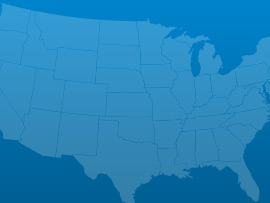Oregon has 1,039 dams, of which 325 are classified as high or significant hazard (31.3%). The State of Oregon has budgeted approximately $244,000 for dam safety. While dam conditions are generally good in the state, there is a lack of safety assessments for many of the irrigation structures in the state. Recently water storage has been reduced at 11 Willamette Valley dams until their spillway gates are repaired or replaced The committee recognizes the work performed by the Dam Safety Program in the Oregon Water Resources Department (OWRD) and the U.S. Army Corps of Engineers (USACE) in inventorying and inspecting dams; however, levees and other water retention structures are not overseen by the Dam Safety Program or USACE.
 Aviation
Aviation Dams and Levees
Dams and Levees Energy
Energy Inland Waterways
Inland Waterways Rail
Rail Solid Waste
Solid Waste Transit
Transit Transportation
Transportation Water and Wastewater
Water and WastewaterA: Exceptional, B: Good, C: Mediocre, D: Poor, F: Failing, ?: Incomplete
Each category was evaluated on the basis of capacity, condition, funding, future need, operation and maintenance, public safety, resilience, and innovation
Aviation
57 public-use airports
Bridges
431 of the 7,656 bridges are structurally deficient
Bridges
$77.20 million in bridge funds came from the Federal Highway Bridge Fund in 2011
Dams
74% of the state regulated dams have an Emergency Action Plan
Dams
61 high hazard dams
Drinking Water
$5.6 billion in drinking water infrastructure needs over the next 20 years
Energy
35.299 gigawatt-hours of renewable energy every year, ranking it 3rd
Hazardous Waste
14 sites on the National Priorities List
Inland Waterways
680 miles of inland waterways, ranking it 15th nationally
Levees
311 miles of levees
Ports
30.8 million short tons of cargo in 2012, ranking it 25th nationally
Public Parks
$21.0 million of unmet needs for its parks system
Rail
17 freight railroads covering 2,395 miles across the state, ranking 30th nationally by mileage
Roads
7,841 of the state’s 59,262 public roads are major roads, and 6% are in poor condition
Roads
$654.0 million a year in costs to motorists from driving on roads in need of repair, which is $236 /yr per motorist
Schools
$2.5 billion in estimated school infrastructure funding needs
Transit
123 million annual unlinked passenger trips via transit systems including bus, transit, and commuter trains
Wastewater
$3.8 billion in wastewater infrastructure needs over the next 20 years

March 03, 2017
As the President’s repeated in his address to Congress his pledge to dramatically increase infrastructure spending to the tune of $1 trillion, various Congressional Committees

March 01, 2017
On Tuesday night, President Trump addressed a joint-session of Congress for the first time in his presidency. Infrastructure was among the many issues he discussed.

February 28, 2017
U.S. motorists set a new record for vehicle miles travelled (VMT) in 2016, driving over 3.2 trillion miles, an increase of 70 billion miles from

February 17, 2017
Romantic dates, the Grammy awards and celebrating black history are not the only milestones of this week; the Oroville dam crisis in California and the